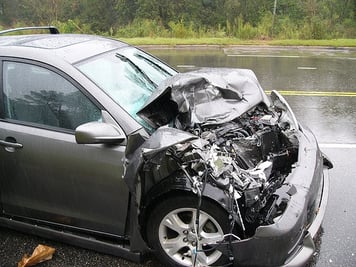Deadly Consequences of Distracted Driving: The National Transportation Safety Board (NTSB) recently concluded their investigation into a deadly traffic accident involving a tractor-trailer, a pickup truck, and two school busses. The accident claimed 2 lives and injured over 40 people. After over a year of investigating the incident they concluded that the accident was caused by the driver of the pickup truck who had been texting right up until the deadly crash. After checking the culprit’s phone records they discovered 11 text messages sent or received in the 11 minutes preceding the crash. Sending 1 text message while driving is too many, and illegal in many states, but 1 per minute for over 10 minutes is incredibly dangerous as the tragic accident unfortunately demonstrates.
Distracted Driving Statistics
Distracted driving is a serious and growing problem affecting drivers of all ages. Every year more and more people are seriously injured due to distracted driving accidents in the United States.
- In 2018, 2,841 people were killed and 400,000 were injured in distracted driving car accidents
- 16% of crashes with injuries involved reports of distracted driving
- Drivers who use hand-held devices are 4 times more likely to get into a serious accident
- Texting while driving creates a crash risk 23 times worse than driving while not distracted
- Using a cell phone, in any capacity, while driving is equivalent to driving with a blood alcohol concentration of .08 percent
Technology Distractions
Today, more than ever before, vehicles come equipped with technology designed to make the driving experience as comfortable as possible. The danger is that all these features can distract the driver from what is most important…actually driving. Cell phones, GPS devices, satellite radios, in-car DVD players, and much more have certainly made traveling much easier and enjoyable, but it is important to use these devices as they were intended. The driver of a vehicle should never operate any of these devices while the vehicle is in motion. If the use of one of these devices is needed, a passenger in the vehicle should do it or the driver should safely pull off the road and then use the device.
Passenger Distractions
Organizations that transport other passengers, especially children or adults with disabilities, face another type of distraction from these individuals and need to be trained how to deal with them. When possible, an assistant or chaperone should be in the vehicle and respond to passenger distractions. Whatever happens, it is important that the driver maintains their focus on the road at all times. If passenger distractions become too great, the driver should pull the vehicle over and deal with the situation. Every second that a driver takes their focus away from driving the chances of an accident increase exponentially.
How do We Prevent Distracted Driving?
Distracted driving is an extremely prevalent problem that kills and injures thousands every year. Controlling the behavior of drivers is extremely difficult. The best way to prevent accidents from distracted drivers is to educate them on just how dangerous driving while distracted is. The statistics don’t lie, and, as the trends indicate, more and more accidents will be caused due to distracted driving in the years to come.
Another important aspect in protecting drivers from distractions is to create a policy prohibiting the use of any electronic device while operating a vehicle. The National Safety Council conducted a study in 2009 of almost 500 companies that banned the use of all handheld and hands-free devices while driving and 99% of participants stated that productivity did not decrease as a result. This demonstrates that the use of these devices while driving can be eliminated without hurting business and greatly increasing the safety of these drivers and their passengers.




